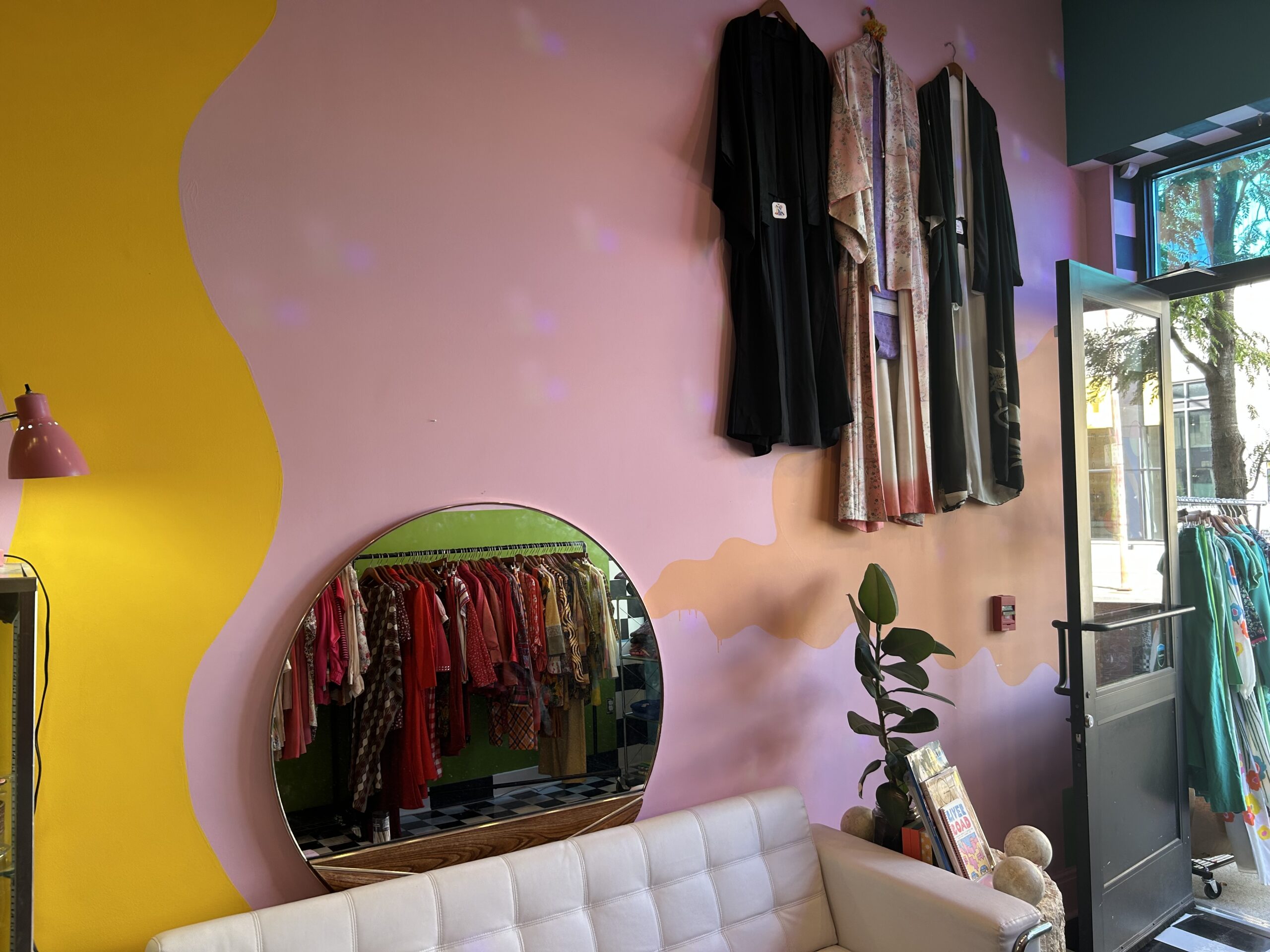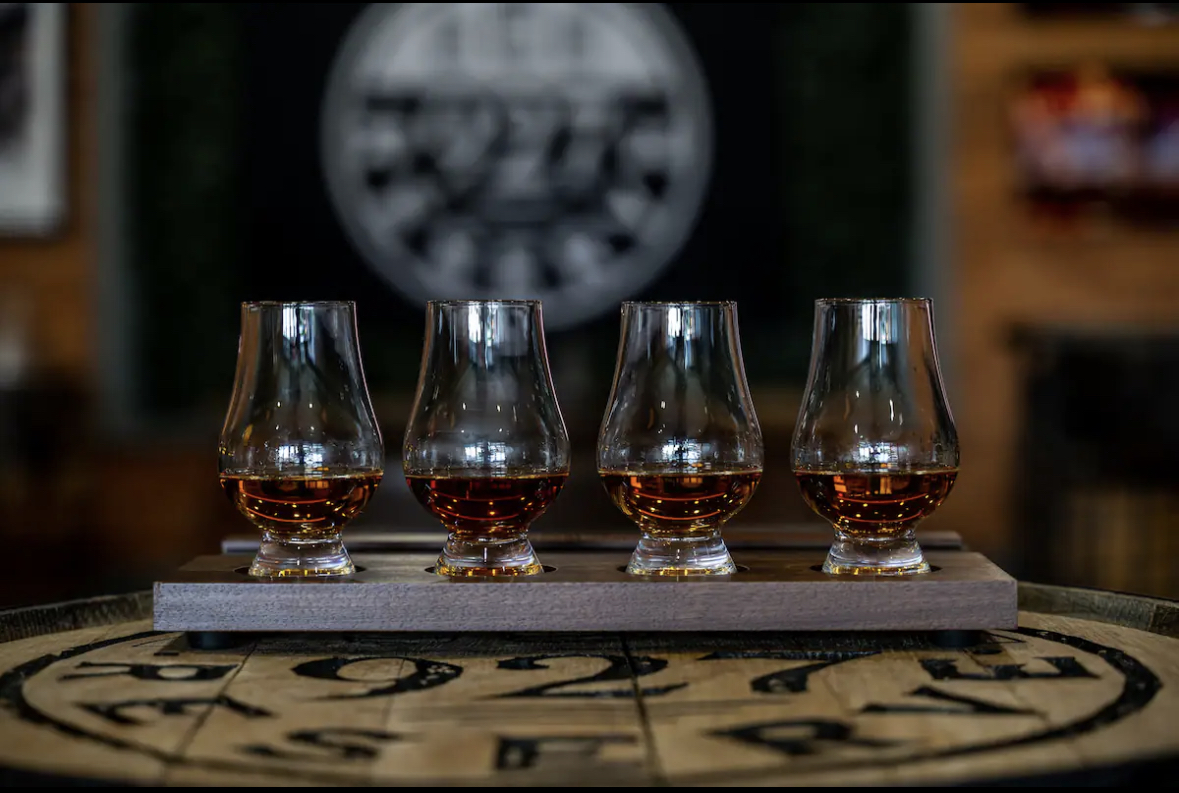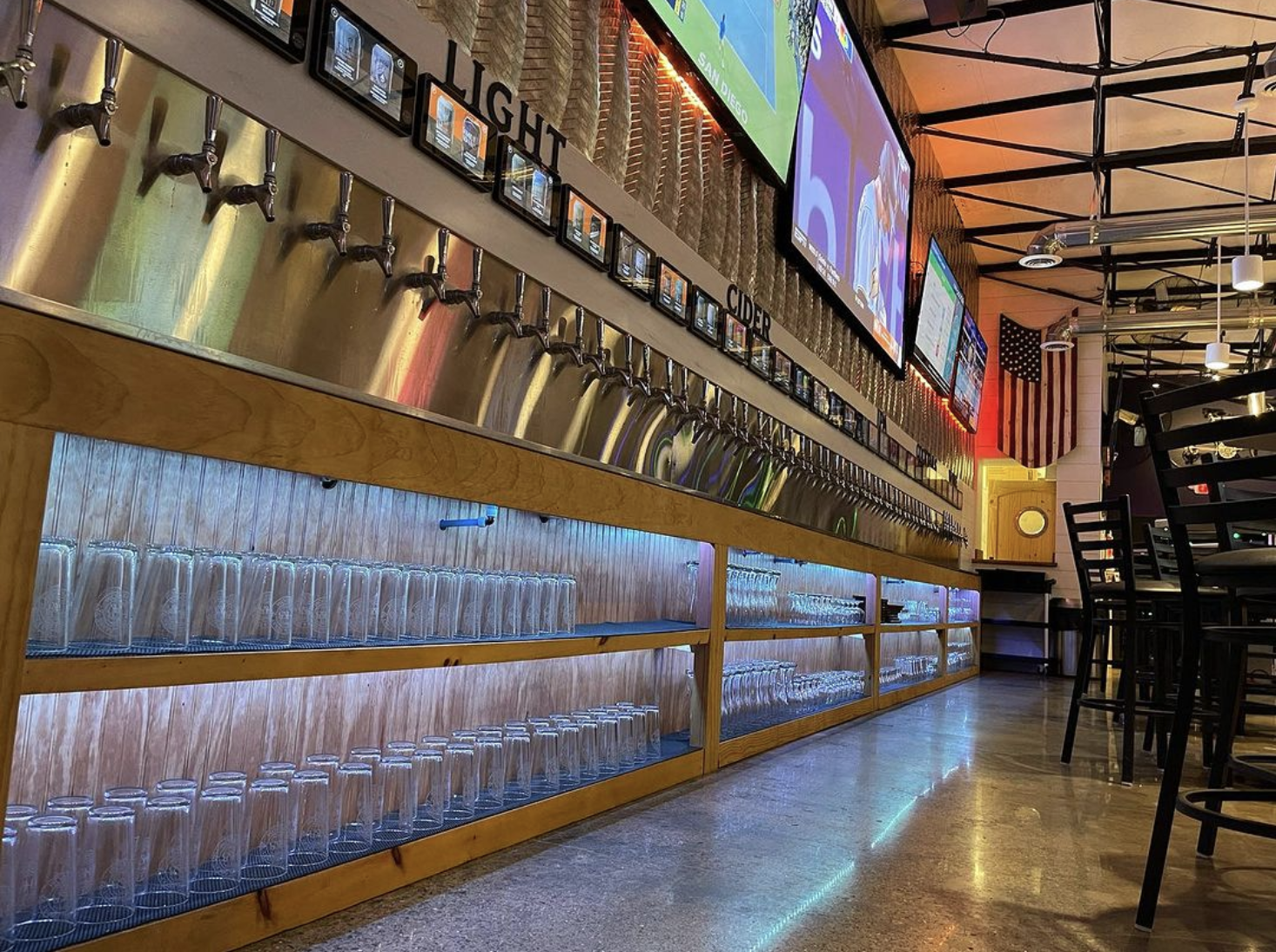Ready to kick your wardrobe up a notch? Head over to Impossible Colors in Walnut Hills and go from ho-hum to hip. Their art-meets-style approach to everyday wear makes this clothing store more than just a place to shop; it’s an experience that allows you to connect with timeless fashion while adding a cool vintage vibe to your present.
I was so impressed with this clothing store that I decided to learn more about what inspired the owners, Liz Wolf and Shawn Muhammad, to open Impossible Colors.
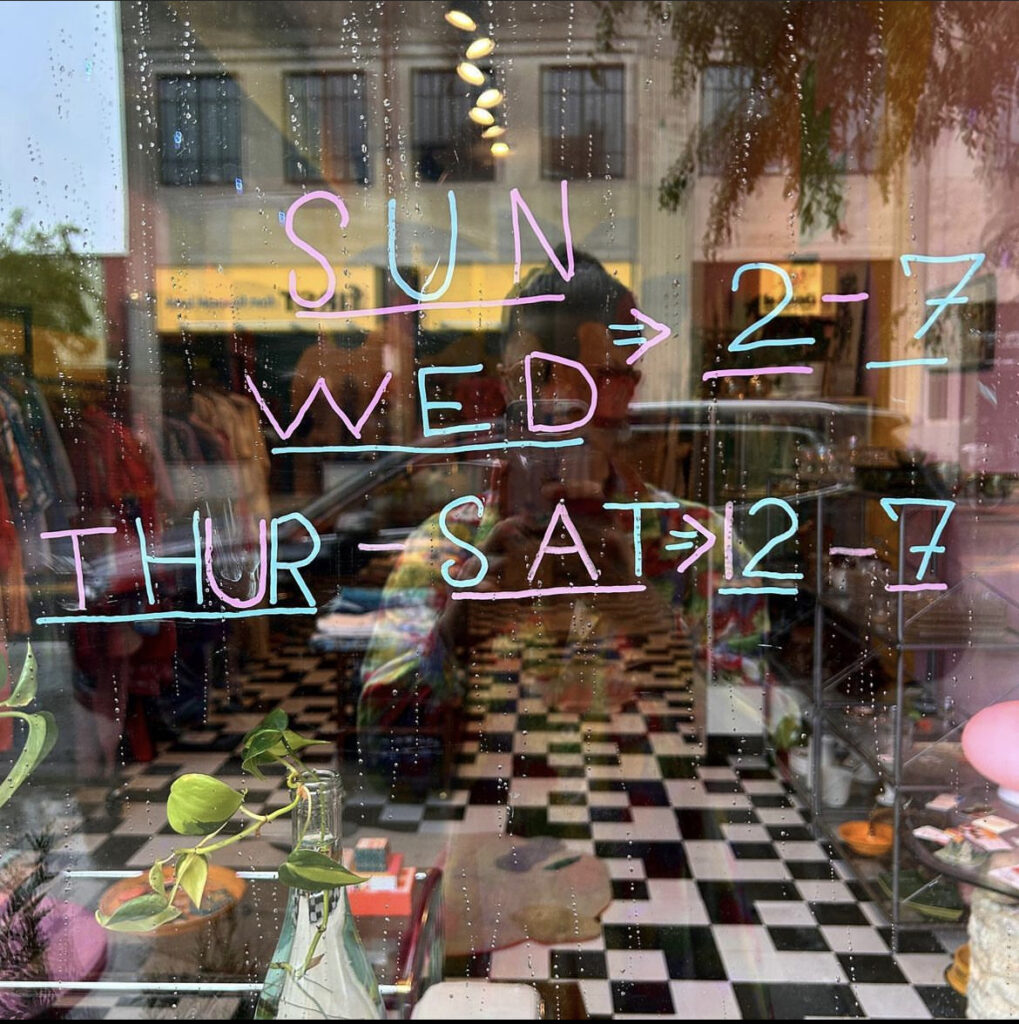
How do you curate the items in your store? What criteria do you use to select the pieces you consign?
We curate the store like we curate our own closets, but for all sizes and shapes, not just our own or what’s typical. We get most excited about vibrant colors and wild prints, but we have an appreciation and an eye for clean simple designs as well. We select our pieces with an open mind and a clear criteria. It’s a bit abstract, but if a piece excites us or makes us think of a certain customer, we prioritize that over other items that may not work for us.
Being label-conscious does play a role in what we accept and what we don’t, but for our purposes we take more contemporary items than our fellow sellers. We are a buy-sell-trade store primarily for curated everyday wear which includes vintage.
What makes Impossible Colors unique compared to other vintage clothing shops in the area?
The first thing you see when you walk in our shop is bold color designs on the walls. Just that sets us apart from pretty much everyone in our city. We are visual artists, fashion lovers and design-based creatives so we live in a multi-sensory world. It was our vision from day one that our space be as beautiful and unique as we are and that’s reflected in the clothing as well. We color coordinate our racks to make the shopping experience easier. It’s form and function working together and makes for a very pleasing visual element. Lastly, we are also the only buy-sell-trade store of secondhand + vintage in the city, period. And we’re doing it on our own as independent buyers with no outside funding or grant money.
How do you build and maintain relationships with customers and consignors? What role does customer service play in your business?
Honestly, we are just ourselves living fully in our creativity and joy, and that energy draws people in! We are very mindful of the economic and racial diversity in our neighborhood, and we do our best to treat people fairly and respectfully. We love the community essence in the neighborhood and share that ethos with all of our shoppers, sellers and traders. We are naturally curious, excited and invested in our community, so customer service is a genuine connection.
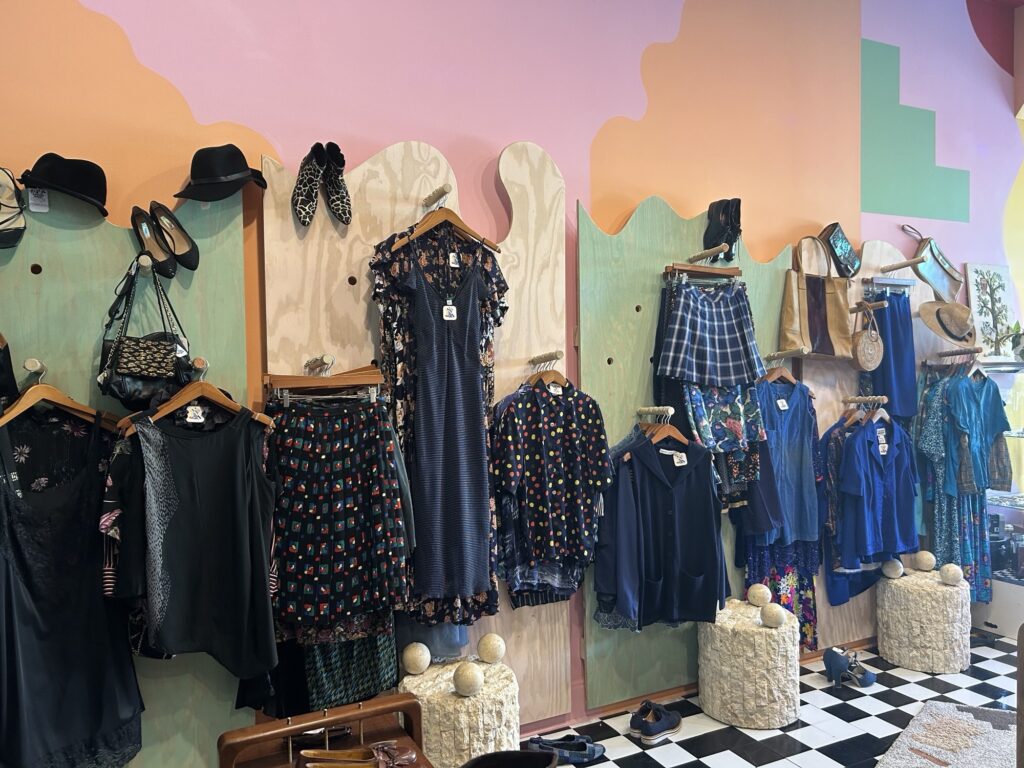
Vintage clothing often has a rich history. Are there any particularly interesting stories behind some of the items in your store?
One piece that stands out is a 1960’s metallic organza gown that came to Liz in very poor condition. It was first repaired, and sleeves removed by a seamstress friend, but the dress just wasn’t drawing much attention despite how brilliant the fabric is. Some of the fabric was so delicate it still needed additional mending, so another seamstress friend transformed it into a jumpsuit at Liz’s request. The moment we made it a jumpsuit, it sold! The journey of that piece from its original purpose and life until we found it and transformed it is fascinating. Several of our sellers bring family pieces in and we love that so much. It’s just always a treat for us.
What advice would you give to someone interested in starting their own small vintage clothing/buy-sell-trade business?
Get your friends together and create a business plan. There are so many people here willing to lend eyes, ears, ideas and helping hands. Then just do it.
Can you describe a few of your most popular or sought-after vintage items, and why do you think they’re so appealing to customers?
The bomber jacket is one of the most sought-after pieces and that’s true across the spectrum. It’s a perfect jacket that goes with literally everything and is gender neutral.
How do you envision the future of Impossible Colors? Are there any exciting plans or projects on the horizon?
We already feel like we need more space and plan to expand in a year from now. Impossible Colors is more than just a secondhand clothing store. We are a multi-disciplinary creative brand. In our next space we will be able to include a vintage furniture collective, as well as a dedicated space for events and pop-ups, while continuing to create visual art for ourselves and other businesses.
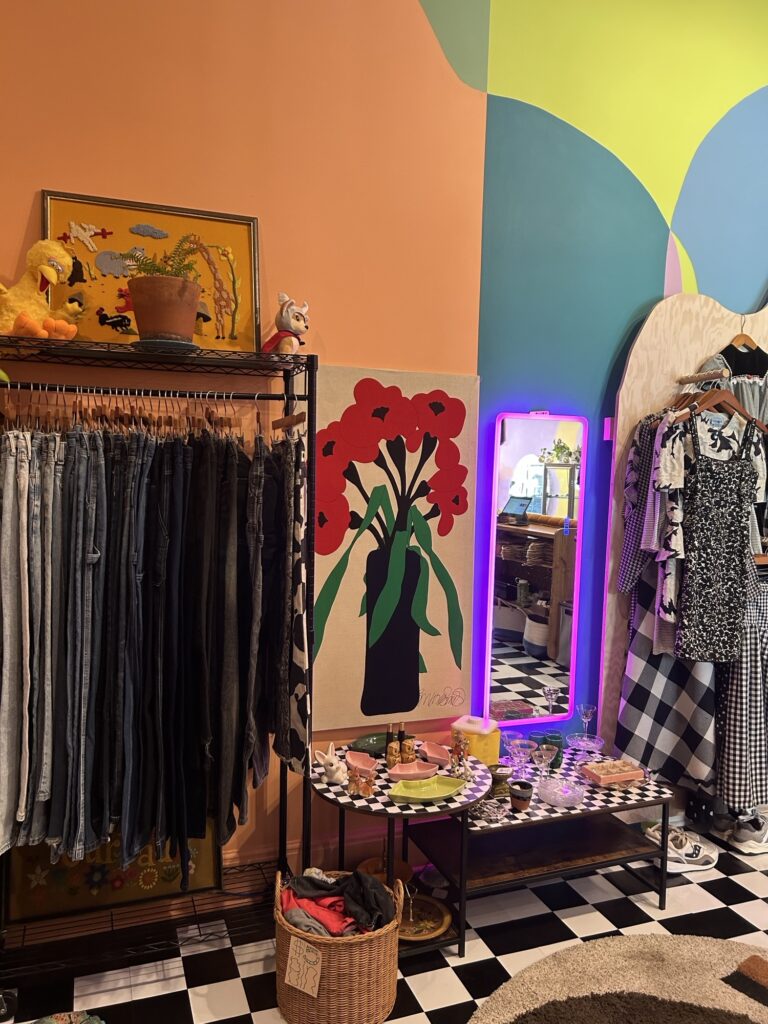
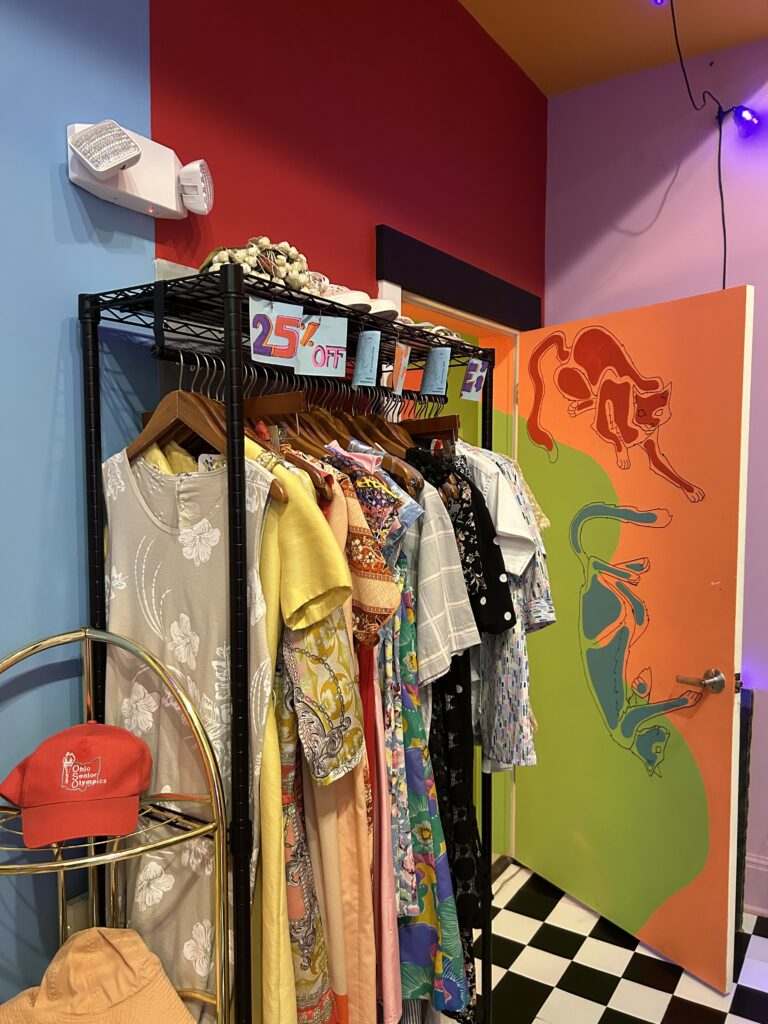
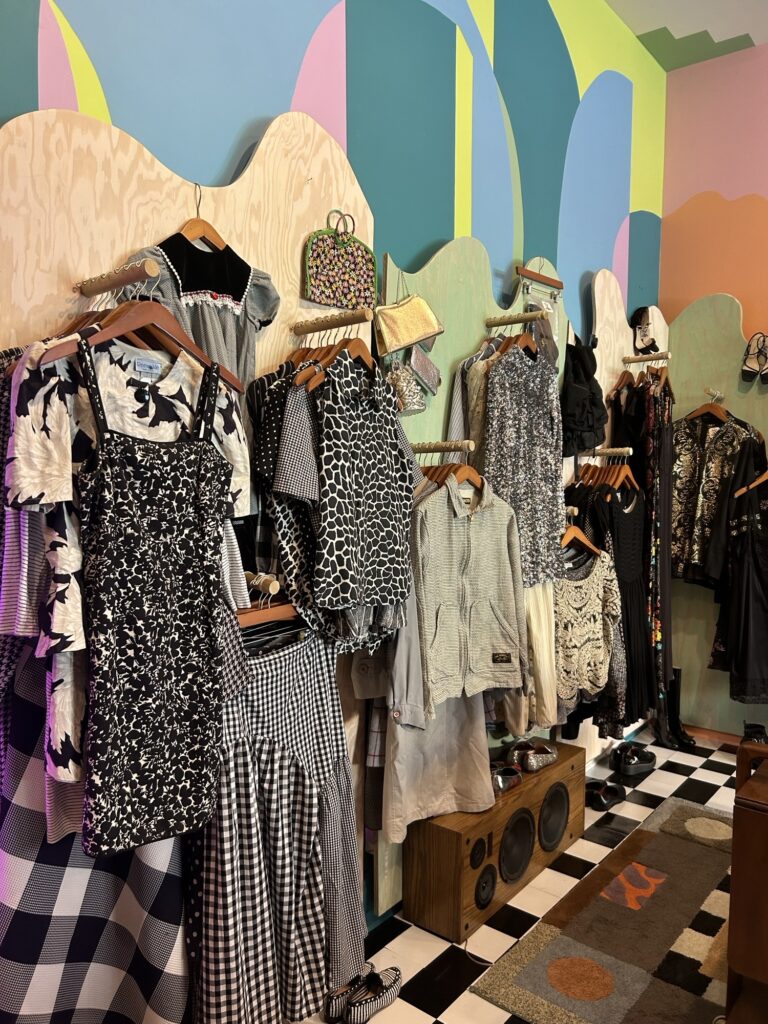
Can you tell us a bit about the history of your vintage clothing consignment store? What inspired you to start Impossbile Colors?
As we’ve only been open for a short time, the store itself doesn’t have a long history. Our individual histories come from years of buying and wearing vintage, then years of selling pop-up style online. Eventually we curated successful flea markets both separately and together, all of which translates to what Impossible Colors is today.
Vintage fashion has seen a resurgence in popularity in recent years. How have you noticed this trend affecting your business?
More people are coming to the conclusion that secondhand, handmade, up-cycled and mending aren’t just cool buzz words. They are small ways to help lessen the burden we put on the planet and promote sustainability by repairing or even completely updating vintage pieces like the gown turned jumpsuit.
What are some challenges you’ve faced as a small business owner in the vintage clothing industry, and how have you overcome them?
Two challenges for us have been encouraging and maintaining size inclusivity and gender-neutral shopping. We aim to be a shop where absolutely everyone can put together an outfit anytime they shop. We’ve had an amazing response from day one and we know that all sizes and genders have and want cute clothes. They also need a place to sell and trade for new pieces.
Men, especially straight cis men, often feel uncomfortable looking at a rack that includes women’s wear. It’s a challenge we welcome, and a lot of times can be overcome by softening gender norms in customers’ heads. A ladies linen pant with a drawstring? Perfect fit for bigger guys. Men’s Levi’s can be a more masculine women’s pant. We have a really lovely trans and non-binary customer base and I think that is in part because of how we merchandize our store and how we dress.

